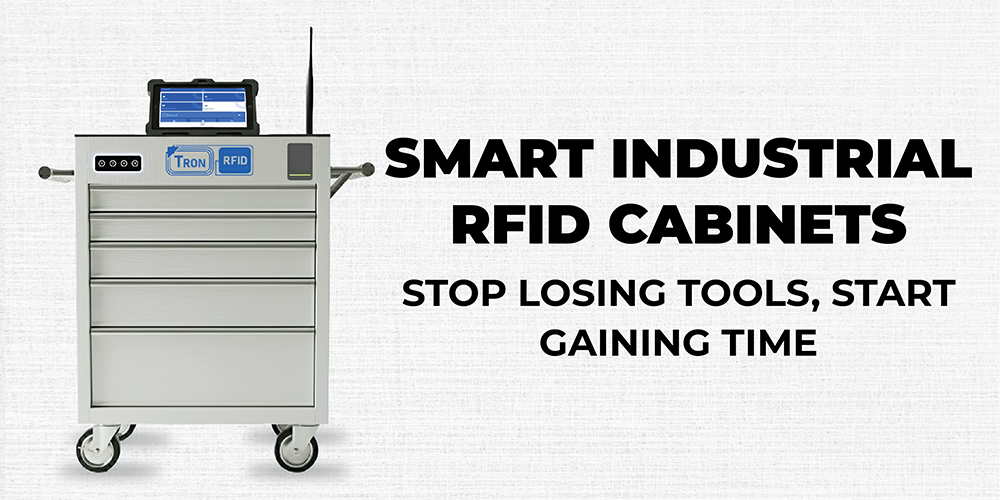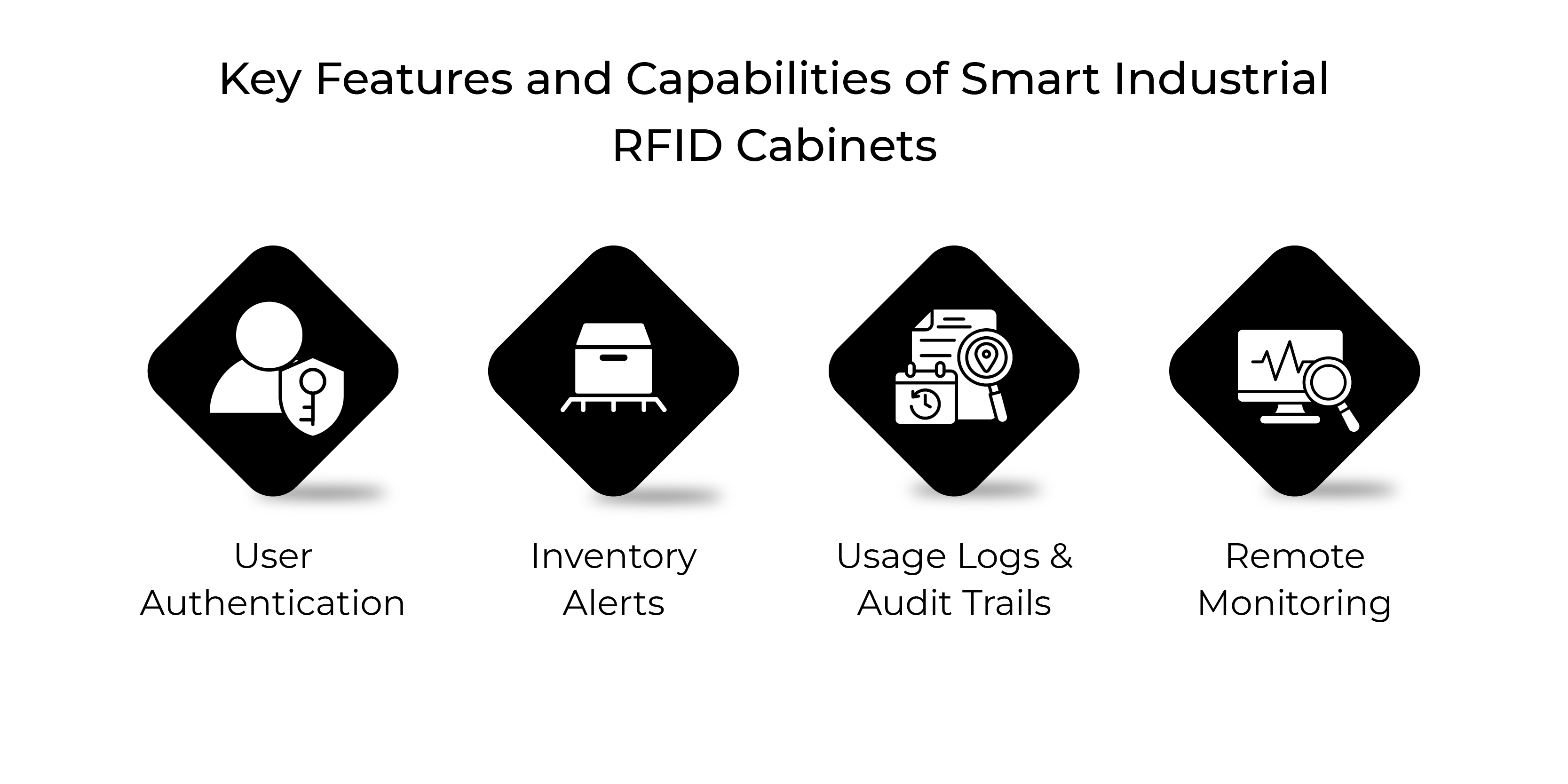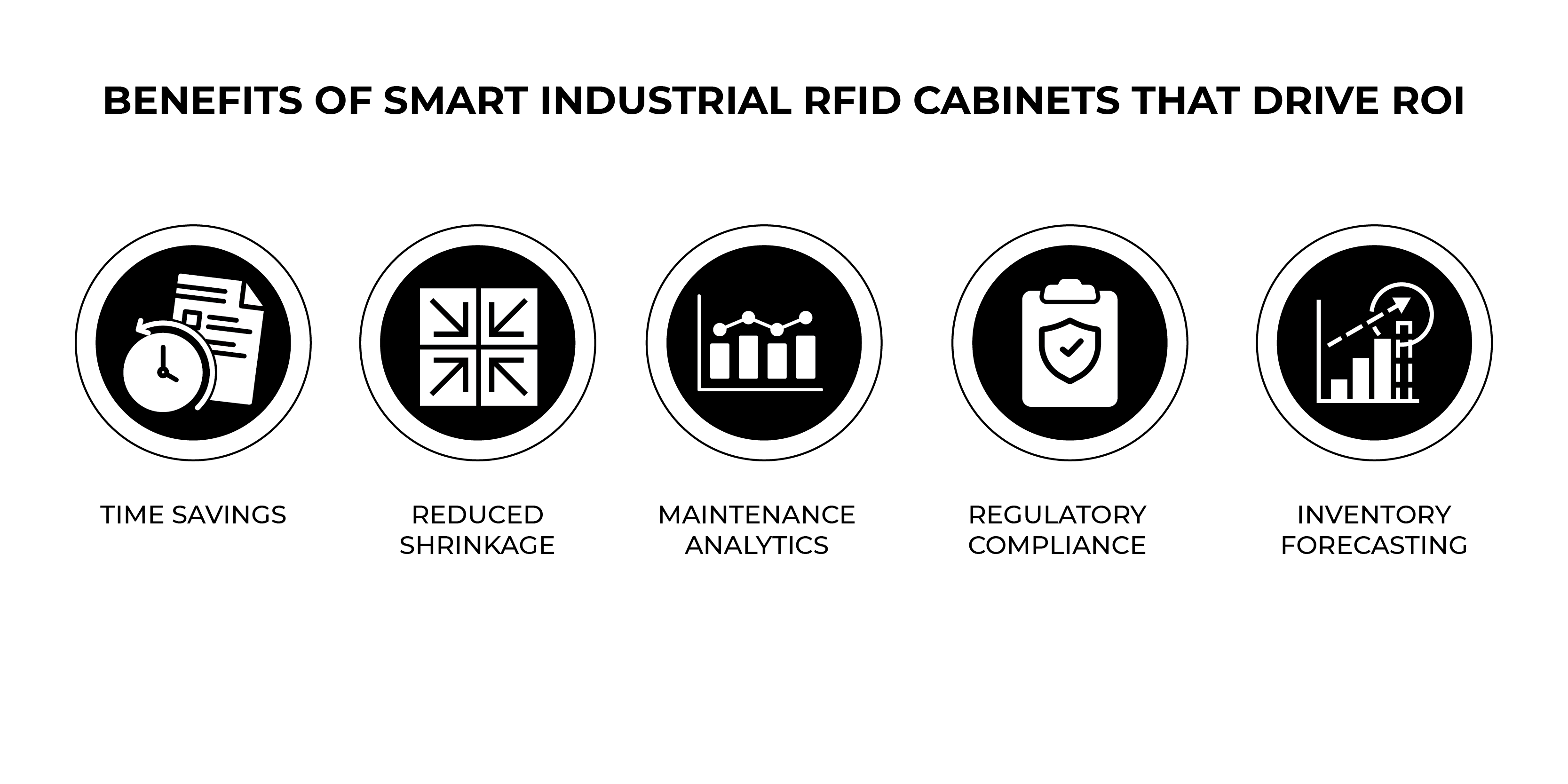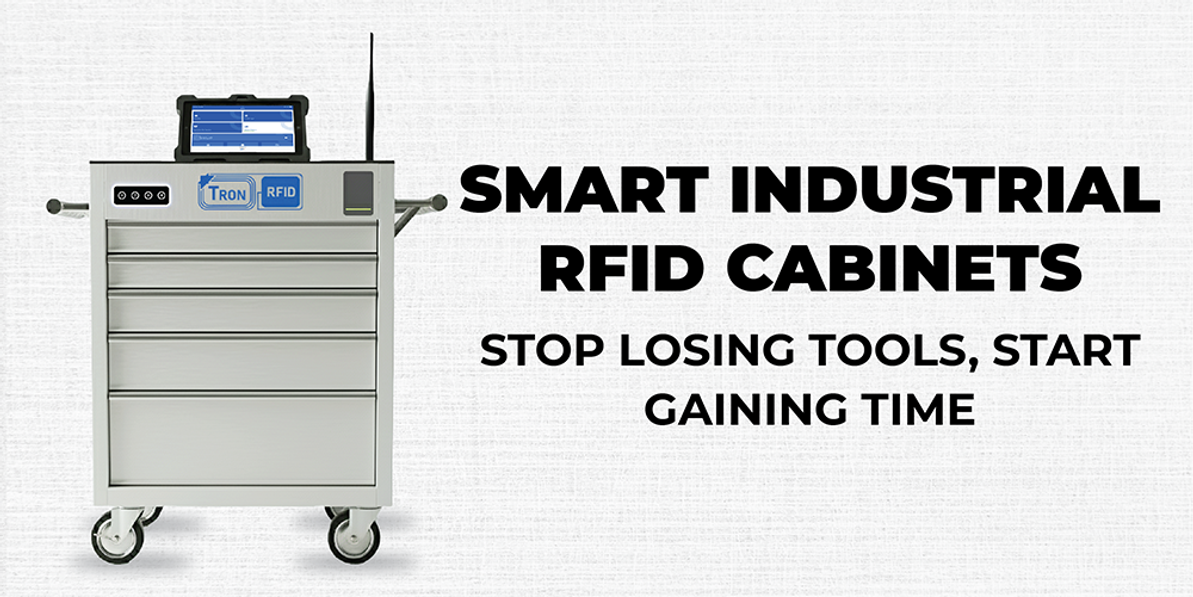Smart Industrial RFID Cabinets: Stop Losing Tools, Start Gaining Time
In industrial environments, tool loss and inefficient tracking systems are more than just minor inconveniences—they’re operational liabilities. Whether it’s a missing torque wrench on a production line or a delayed shift due to manual inventory checks, these issues cost time, money, and trust.

Enter RFID technology. Radio Frequency Identification (RFID) has revolutionized asset management by providing real-time visibility and enabling automated tracking. When embedded into smart industrial cabinets, RFID transforms tool control from a manual chore into a seamless, data-driven process.
Smart RFID cabinets offer a compelling promise: automation that saves time, accountability that reduces loss, and speed that keeps operations moving.
The Problem: Tool Loss and Time Drain
Tool misplacement is a common issue across industries. Workers often spend valuable minutes searching for tools, manually signing them in or out, or waiting for supervisors to verify access. These delays compound over time, leading to:
- Reduced productivity: Downtime during shift changes or maintenance tasks
- Safety risks: Missing tools can compromise job safety or violate compliance protocols
- Audit headaches: Manual logs are prone to errors, making audits slow and unreliable
- Hidden costs: Replacing lost tools, investigating discrepancies, and managing inventory manually consume labor and budget
Without a reliable system, tool control becomes reactive rather than proactive.
What Are Smart Industrial RFID Cabinets?
Smart industrial RFID cabinets are secure storage units designed to automate tool tracking using integrated RFID readers, antennas, and software. Each tool is tagged with a passive RFID label, enabling the cabinet to detect when tools are placed inside or removed—ensuring real-time visibility and accountability across operations.
Core Components:
- RFID readers and antennas: Detect tagged tools within the cabinet
- Secure enclosure: Prevents unauthorized access and safeguards tools against misuse or environmental exposure.
- Software interface: Logs transactions, sends alerts, and integrates with enterprise systems
How They Work:
Smart industrial RFID cabinets operate through a seamless blend of access control and automated tracking. A user begins by authenticating with a badge, PIN, or biometric scan, which unlocks the cabinet. As tools are removed or returned, embedded RFID sensors instantly detect each tagged item and update the inventory in real time. The system logs the transaction with user details and timestamps, while automated alerts flag overdue returns or unauthorized access, ensuring accountability and operational transparency.
These cabinets can integrate with ERP (Enterprise Resource Planning), MES (Manufacturing Execution Systems), or WMS (Warehouse Management Systems) to ensure centralized visibility and control.
Key Features and Capabilities of Smart Industrial RFID Cabinets
Smart cabinets are more than just storage—they’re intelligent systems designed for operational efficiency.

User Authentication
Smart cabinets use secure access methods like employee badges, PINs, or biometric scans to ensure only authorized personnel can retrieve tools. This creates a direct link between users and tool activity, reinforcing accountability and reducing misuse.
Tool Movement Alerts
The system automatically generates alerts when tools are checked out, returned late, or accessed without authorization. These notifications support real-time visibility, reinforce compliance protocols, and reduce manual oversight by flagging unusual activity or delayed returns.
Usage Logs and Audit Trails
Every tool transaction—check-out, return, or access attempt—is digitally recorded with timestamps and user IDs. This detailed audit trail supports regulatory compliance, simplifies internal reviews, and eliminates the errors common in manual tracking systems.
Remote Monitoring
Supervisors can view cabinet status, inventory levels, and user activity through cloud-based dashboards from any location. This real-time visibility enables centralized oversight across multiple facilities, improving responsiveness and operational control.
These features reduce manual effort and improve traceability across shifts and departments.
Use Cases Across Industries
Smart RFID cabinets are adaptable across sectors where tool control is mission-critical:
Aerospace
Smart RFID cabinets ensure precise tool tracking during aircraft maintenance. They prevent tool loss in critical zones and maintain audit-ready records for safety and regulatory inspections.
Automotive
On assembly lines, RFID cabinets track tool usage to avoid delays and ensure consistent quality control. They streamline tool access across shifts and reduce downtime caused by misplaced or unavailable equipment.
Energy
In hazardous environments like oil rigs or power plants, smart cabinets manage specialized tools under strict safety protocols. They help enforce access control, monitor tool condition, and support compliance with industry-specific regulations.
Manufacturing
For multi-shift operations, RFID cabinets enable fast, secure tool handoffs between crews. They reduce downtime, improve accountability, and support lean manufacturing by ensuring the right tools are always available when needed.
Defense
Mission-critical gear is secured with multi-layer authentication, including biometrics and PINs. RFID tracking ensures full traceability, while audit logs support operational integrity and compliance with defense-grade security standards.
Benefits That Drive ROI
Smart RFID cabinets deliver measurable returns across multiple dimensions:

Time Savings
Automated check-in and check-out processes eliminate manual logging and drastically reduce search time. Technicians access tools faster, minimizing delays and freeing up labor hours for productive, value-added tasks.
Reduced Shrinkage
Controlled access tied to user authentication, combined with real-time tracking, significantly deters tool theft and loss. Every transaction is logged, creating accountability and reducing the need for costly replacements or investigations.
Maintenance Analytics
Smart cabinets collect usage data that helps predict tool wear and schedule preventive maintenance. This ensures tools remain in optimal condition, reduces unexpected failures, and extends the life of high-value equipment.
Regulatory Compliance
Detailed audit trails support ISO, OSHA, and internal SOP requirements. Every tool movement is documented, making it easier to pass inspections, maintain certifications, and avoid penalties for non-compliance.
Inventory Forecasting
Real-time visibility into tool check-in and check-out patterns enables smarter planning and resource allocation. Maintenance and procurement teams can monitor usage trends, anticipate tool availability needs, and avoid excess ordering—resulting in leaner tool inventories and more efficient budget control.
Deployment Considerations
Successful implementation requires thoughtful planning:
- Cabinet Sizing: Choose based on tool volume, dimensions, and access frequency
- RFID Tag Selection: Match tag type to tool material, size, and environment
- Environmental Factors: Account for metal interference, temperature extremes, and humidity
- IT Integration: Ensure compatibility with existing APIs, middleware, and security protocols
- Training and Change Management: Educate staff on usage, benefits, and accountability to ensure adoption
A well-planned deployment ensures long-term success and scalability.
Conclusion
Smart industrial RFID cabinets are more than a tech upgrade—they’re a strategic investment in operational efficiency. By automating tool tracking, improving accountability, and delivering real-time insights, these cabinets help industrial teams stop losing tools and start gaining time.
If your facility struggles with tool loss, manual inventory, or compliance audits, it’s time to explore RFID cabinet solutions. Request a demo, evaluate your workflow, and take the first step toward smarter asset management.
Recent Posts
-
RF Shielding Explained: Types, Applications, and Benefits
Introduction RF shielding is essential for protecting devices from electromagnetic interference. Thi …Dec 8th 2025 -
How Smart Cabinets are Revolutionizing Surgical Inventory
Hospitals face constant challenges in managing surgical inventory. From stockouts that delay critica …Dec 1st 2025 -
RFID Software vs Manual Tracking — Cost and Accuracy Compared
Inventory and asset tracking are the backbone of efficient operations in logistics, retail, and manu …Nov 28th 2025




